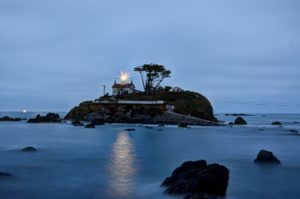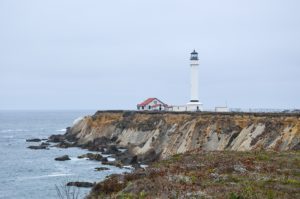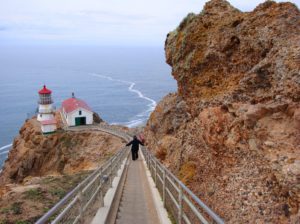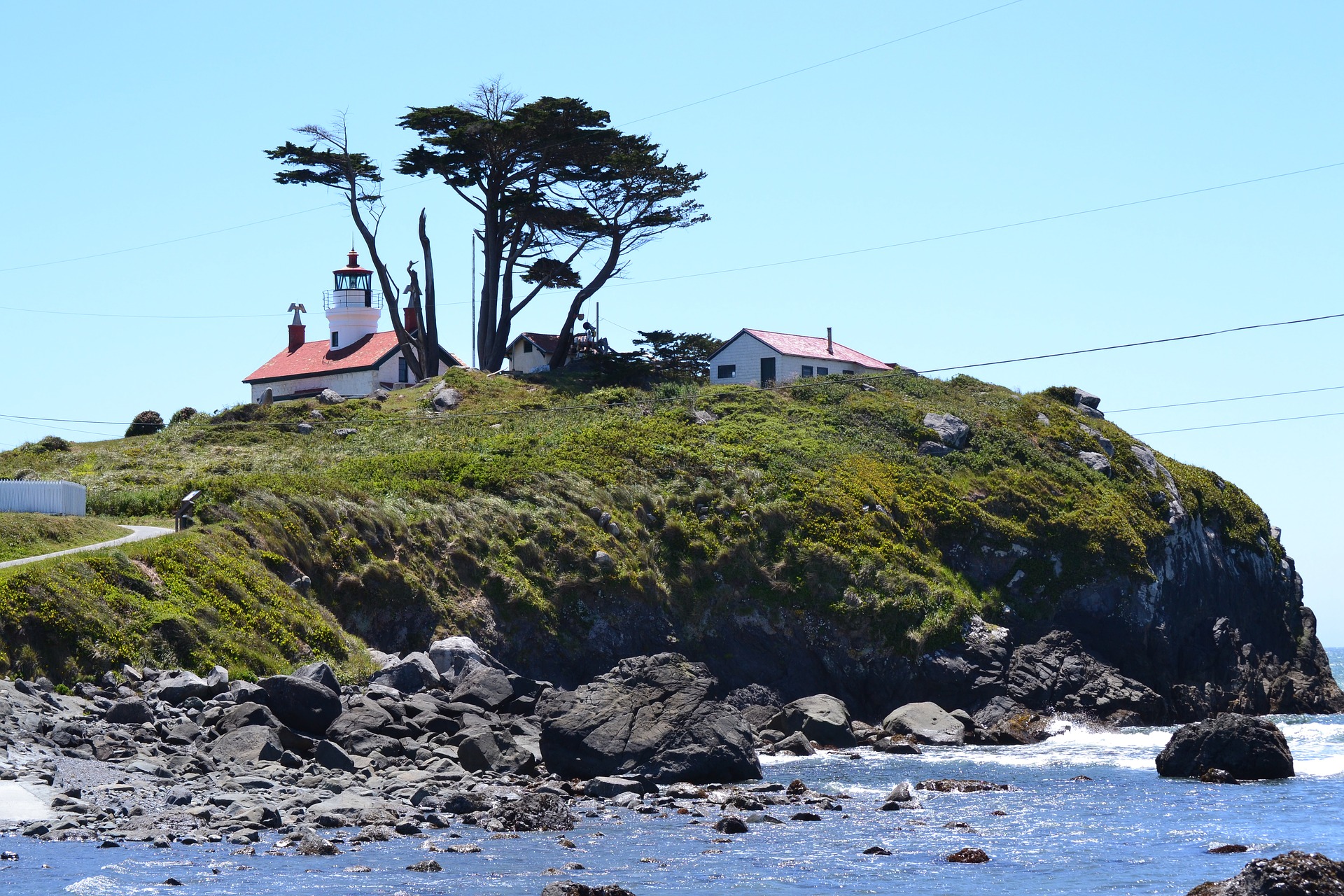Lighthouses played an important role in California History. As major cities, such as San Francisco, began to grow, resources needed to be transported in from northern parts of California. Ships faced a dangerous journey because of foggy, rainy weather and a jutted, rocky coastline. In 1852 the United States Congress authorized the construction of the first eight lighthouses on the West Coast to make travel safer. Many more were quickly added in the following years. Even though most of California’s lighthouses have been decommissioned, some remain open to the public. Below are three of the most iconic lighthouses on the California shore.

Battery Point Lighthouse
The Battery Point Lighthouse is sometimes referred to as the Crescent City lighthouse. In the 1850s, Crescent City was a major shipping port for lumbar, but the rocky, foggy shoreline was problematic for sailors. In May 1855, $15,000 was alloted to construct a lighthouse just off the coast on Battery Point Island.
The first lighthouse keeper was Theophilus Magruder, a man from the East Coast who took the job for the $1,000 a year salary. When the salary was reduced by 40% a few years later, he quickly left the position, leaving it to be filled by many others over the years. In 1953, updates were made to automate the lighthouse. The Battery Point lighthouse was hit by the 1964 tidal wave caused by the Alaskan earthquake, but was left standing. Compared to the surrounding area, only minimal repairs were needed.
Today Battery Point Lighthouse is open seven days a week from April to September. From March to October, it is only open on weekends. Visitors can climb the lighthouse tower as well as view the keeper’s quarters, which include original furniture from the 1850’s. Displays also include maritime artifacts, photos, and historical documents.

Point Arena Lighthouse
With a height of 115 feet, Point Arena is currently the tallest lighthouse on the West Coast. The original lighthouse was constructed in 1870. At that time, there was only one house for the light keeper, his three assistants, and all their families, making for crowded quarters.
Unfortunately, even with the aid of steam whistles, the original Point Arena lighthouse was not the most successful. In 1896, a ship called the San Benito crashed into the shore. Jefferson Brown, the lightkeeper, along with other local men ran to help, but the rough waters prevented their efforts. Eventually, a passing ship rescued the survivors.
The 1906 earthquake damaged both the lighthouse and the keeper’s home beyond repair, resulting in their demolition. The Lighthouse Service funded the rebuilding of the lighthouse, this time hiring a smokestack factory to build an earthquake proof lighthouse. Point Arena is the first lighthouse to be made of steel-reinforced concrete. When the U.S. Coast Guard took control several years later, an aircraft beacon was added and the lighting was automated.
The Point Arena Lighthouse is open for guided tours. This includes climbing the 145 step spiral staircase up the tower. The grounds are open to the public as a park. During full moons, there are night tours. Visitors can also stay overnight in one of the restored keepers’ houses. For more information, visit the Point Arena Lighthouse website.

Point Reyes Lighthouse
Point Reyes is known for two things: rain and fog. The Point Reyes Lighthouse sits on a strip of land about ten miles into the sea at the bottom of a cliff. This location offers the best visibility for ships. This also means visitors must descend 300 steps nearly straight down to access the lighthouse. Visiting Point Reyes is not for the faint of heart.
The original tower built at Point Reyes still stands. At only 37 feet tall, it is uniquely shaped with 16 sides. The Point Reyes Lighthouse actually has an identical twin at Cape Mendocino, but it is not open to the public. Many keepers found the extreme weather and isolation unbearable and only lasted a few years. However, one lightkeeper named Paulus Nilsson was hired as an assistant in 1897 and stayed until 1921.
Because of complaints of low visibility, a siren was added in 1881. In 1915, it was replaced by a foghorn that could carry over five miles. In 1938, the original clockwork that required turning every two hours was replaced by an electric mechanism. The United States Coast Guard retired the Point Reyes lighthouse in 1975 and allowed it to be run by the National Park Service.
The original mechanisms and lens that controlled the lighthouse are on display for limited viewing hours. There is also a visiting center, located on higher ground for those who don’t want to brave the steps, with exhibits about the lighthouse and the natural history of the area. For more information, visit the Point Reyes Lighthouse National Seashore Association website.
Planning a trip?
If you’re planning to travel to the Northern California Coast, you need our Northern California Coast Map. The clearly labeled, easy-to-read map will give you a bird’s eye view of the area, including all major roadways and attractions. Additional tourist information is included as well.
